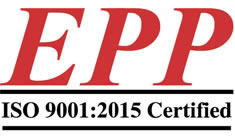- June 29, 2014
- Posted by: EPP
- Category: Engineering Help
With every project that includes plastic components, you will need to answer the question, “Should I machine or mold this part?”
The two major factors needed to reach your conclusion are quantity of parts and level of dimensional tolerance. As a general rule, you should consider plastic machining when lower volumes are needed or tighter tolerances on the dimensions are needed – or both.
Quantity of parts is significant because of the tool cost of a molded part. If you are injection molding your part, the molding tool will typically cost several thousand dollars and tooling for complex parts can cost hundreds of thousands of dollars. Tool costs can make injection molding unfeasible for a low volume run.
Quantities between 100 and 1,000 – on some parts even up to 5,000 – are usually good candidates for conventional or milled plastic machining. Screw machining of plastics can be practical and cost effective from 500 pieces all the way up to 100,000 pieces or more.
Tolerance is a factor because plastic machined parts can typically be produced at a tighter tolerance than molded parts. Each plastic material behaves differently, but you can generally achieve tolerances +/- .005” for molded parts. Plastic machined parts can be produced +/- .001” or better depending on the material and design. This is why critically precise industries – like instrumentation, medical equipment, aerospace, fluid power, telecommunications, and many others – have turned to plastic machining for component needs.
One last advantage to plastic machining is flexibility of design. Once an injection mold has been produced, it can create only that design and any modification to the design requires expensive changes in the mold. Design changes to custom plastic machined parts are immediate and have virtually no impact on tooling costs.


I liked to read this article. It’s always good to know the difference between both molding and machining.